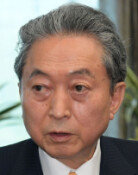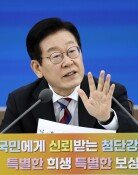Renovation, Renovation But What is the Vision for Afterward?
Renovation, Renovation But What is the Vision for Afterward?
Posted September. 30, 2004 21:40,
The Roh Moo-hyun administrations experiment of state government has been in effect for over a year and a half. But despite the zeal to transform a public service system characterized by laziness and complacency, its efforts have not produced any significant results thus far. A substantial number of public officials, while realizing the need for change, are at a loss as to how to go about it. A department chief working at the Government Complex in Gwacheon even lamented at a private venue, A government based on the division of power, administrative renovationthese are all great terms, but on a practical, concrete level, I have no idea whats going on. In a word, Im confused. The lack of noticeable change in the public service system may be due to the generally conservative atmosphere. On the other hand, a considerable number of voices have pointed out that this unfortunate state of affairs is a side-effect stemming from the failure of President Rohs Participatory Government to present a clear vision of the new social order to come even as it concentrates on the dissolution of the existing one.
Grand Pronouncements Abound
The division of power, renovation, participation, autonomy, equality These are all keywords emphasized by principal members of the Roh administration.
Among them, the tenets of power division and administrative renovation have been vouched for by the president himself as the means and goals of government reform. Their key points include putting an end to the negative practice of monarchical presidency and preventing the privatization of institutions of power; introducing a system of competition to public service equivalent to that in the private sector; and guaranteeing the participation and intervention of outside experts or citizens for the supervision and guidance of those in public office.
A source inside the Office of the Prime Minister stated that the administration is encouraging the autonomous pursuit of renovation plans drawn around the renovation specialists assigned to each department and ministry, and reaping the desired results, citing the strengthening of policy evaluations, the construction of a human resources system based on positive results, and the improvement of conference management methods as some of these results.
But a large number of public servants are milling about with no concrete idea of the contents of the division of power or administrative renovation. This in turn is leading to the discrepancy between the governments goals and their actual application.
A department chief working at the Central Government Complex on Sejongro, Seoul remarked, Theres a lot of big talk, but without any real specificity to it. It seems that those in the higher ranks expect us to just pick up on their ideas and implement them on our own, but the problem is, we cant tell what theyre thinking. Another official said, I once attended a workshop on administrative renovation, but I just felt like Id listened to a lecture that had no bearing on reality.
Certain departments even seem to have adopted a kind of renovation first principle. An official in an economic department confessed, The Renovation Office hands out homework once a week. Just recently, they gave us a thick volume written in English and demanded that we turn in book reviews on it. I cant perform my official projects properly because Im devoting so much time to doing homework.
Structural Superfluities?
President Roh entrusted everyday matters of state to Prime Minister Lee Hae-chan and adopted a system that holds ministers (or teams) ultimately responsible for their respective fields. In addition, he instructed 12 administrative task forces to draft long-term strategic objectives for the management of state.
Government-party officials are showing support for this divided administrative structure, saying that it is the culmination of various experiments, both small and large, that President Roh has been envisioning since he first became elected.
Indeed, the sharing of information between Cheong Wa Dae and the Office of the Prime Minister (OPM) has been active and fluid since the introduction of this divided system. But the lines demarcating the responsibilities of each office have yet to be clearly drawn. An official in the OPM Secretarys Office remarked, So far, the division of work has depended largely on intuition.
Moreover, theres plenty of controversy regarding the system of ministerial liability. A society-related department chief emphasized, The drafting and institution of policies, which require a high level of expertise and judgment, should be done by working-level staff, while the decisions should be left to the ministers or deputy ministers. In other words, a superfluous structurelike a rooftop tenementhas been built up despite the fact that the State Council and the council of deputy ministers are sufficient for fine-tuning and alignment between departments and ministries.
Opinion is also divided on the various committees that provide governmental agendas. Cheong Wa Dae and the OPM explain that the drawing of a big picture by diverse committees based on views culled from civilians and experts, followed by the establishment of policies by various ministries and departments, is the way governments are run in advanced nations.
However, an official with an economic department stated, The basic frameworks for important policies are almost entirely put together by committees answering directly to the president, then handed down to the department, whose only job is to flesh them out. Another official pointed out, Even in the past, there were numerous instances where president-empowered committees drew up policy blueprints that aimed at producing dragons but eventually yielded lizards instead.
Yong-Gwan Jung yongari@donha.com







